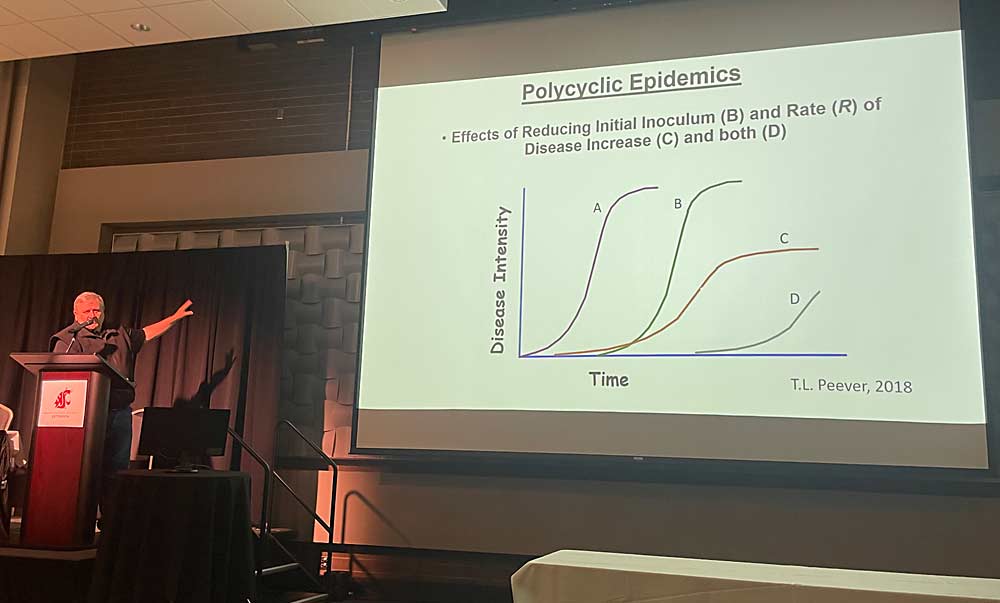
The idea of a new year offering a fresh start unfortunately does not apply to pest management in cherry orchards.
Growers’ powdery mildew management last season will set the stage for this season’s pressure, said Washington State University plant pathologist Gary Grove during a talk at North Central Washington Stone Fruit Day, part of the series of tree fruit days WSU organized with its partners in Wenatchee this week.
“It’s like compound interest. The disease is a function of how much inoculum overwintered, the rate of spread, and time,” Grove said. “If you start with zero, you’ll have zero.”
If it’s too late for that, cultural practices that encourage airflow and light penetration as well as a careful spray program that rotates active ingredients to protect fungicides from resistance can lower the “interest rate” in his analogy. He cautioned growers to be careful with FRAC Group 11 and Group 3 products, which both have widespread resistance in Washington cherry blocks.
“Fruit are only susceptible for the last two weeks before harvest, but you need to keep the inoculum low to protect the fruit,” he said.
Following Grove, WSU’s Tobin Northfield and Tianna DuPont, the meeting’s organizer, shared research updates and management reminders on X disease.
Pest management was also a top topic on Pear Day. Panels of growers spoke about their experience shifting pear orchards from conventional pear psylla management to integrated pest management strategies designed to encourage natural enemies.
The big takeaway: Change can be hard, but data to support decisions makes it easier. That’s where phenology models to guide spray programs and a new WSU-led network of orchard scouting for psylla and its natural enemies come in. Grower Dave Burnett said the data WSU provided made it possible for him to make much-needed management changes.
“I didn’t really think you can change something in one year, but with the data we had, I’ll never go back to conventional,” he said.
A pear marketing panel including Mike Taylor of Stemilt Growers and Sarah Barkley of CMI Orchards discussed encouraging pear consumption numbers and the need for category efficiency and innovation.
“We’re getting much better at delivering high quality consistently,” Barkley said. The challenge is that pears’ primary consumers — families with young children — face a lot of competition in the produce section.
“We need to develop relationships with consumers and tell the story of the small family farmers and build their trust in the food supply,” she said. “That connection will go a long way.”
Tree Fruit Days will conclude with Apple Day at the Wenatchee Convention Center on Jan. 18.
—by Kate Prengaman






Leave A Comment